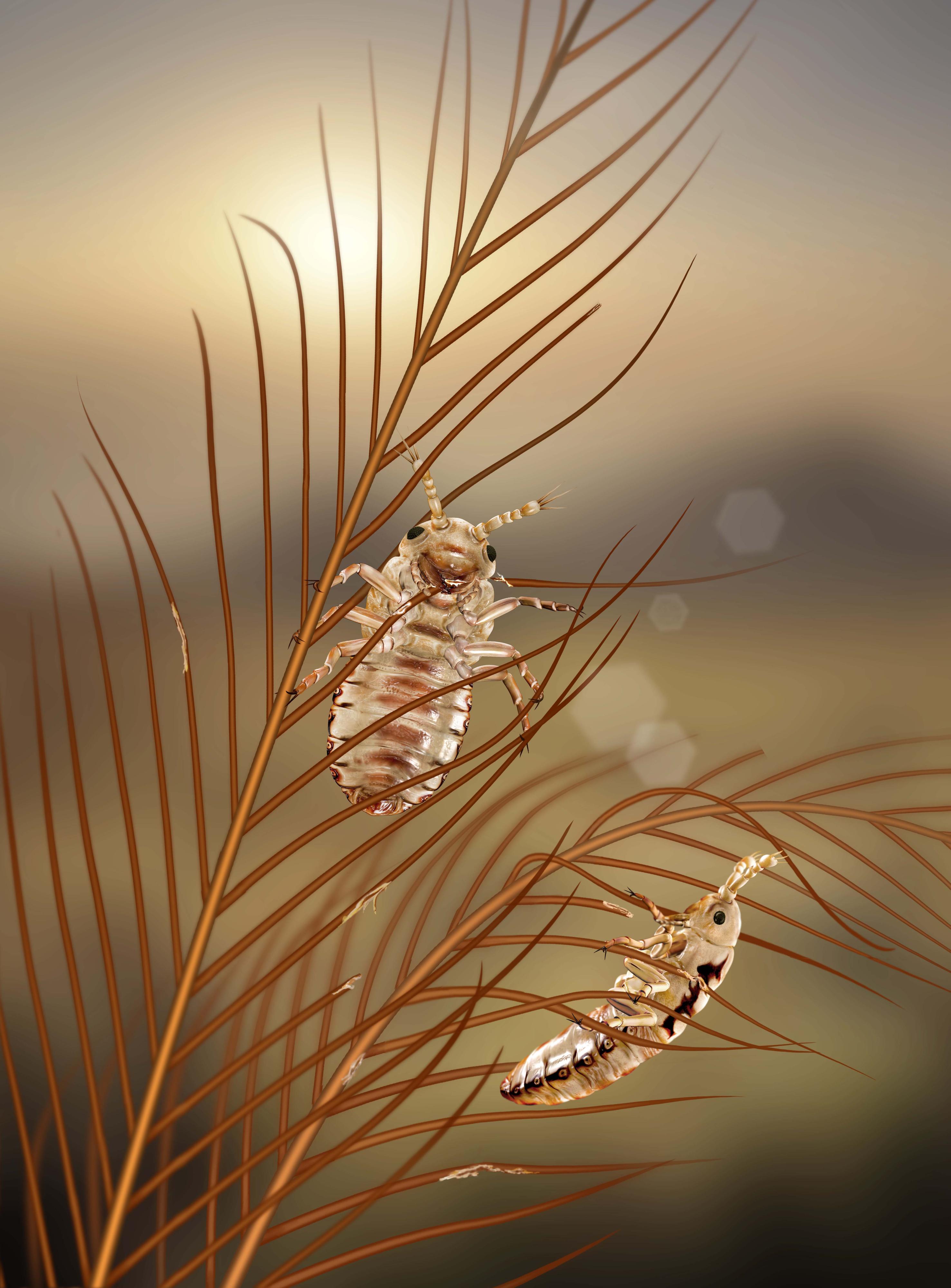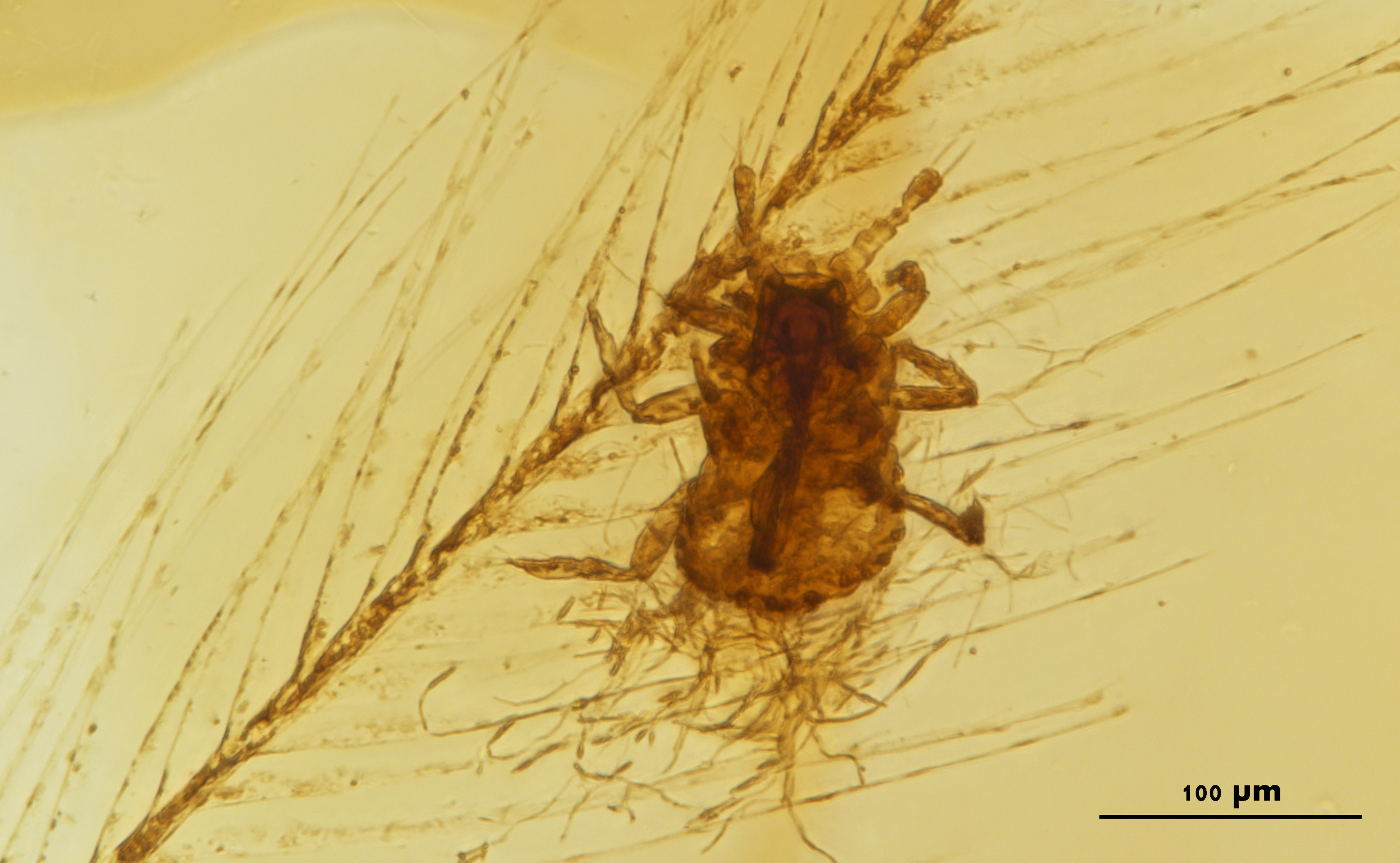Ancient Parasite Eating Dinosaur Feathers Perfectly Preserved in Amber
Credit to Author: Becky Ferreira| Date: Tue, 10 Dec 2019 16:10:42 +0000
If you have ever had to suffer through an outbreak of lice or fleas, here’s some consolation: Dinosaurs totally felt your pain.
That’s the takeaway from exquisitely preserved insects that were entombed in amber while feeding on dinosaur feathers some 100 million years ago. The incredible specimens of Mesophthirus engeli, a new species of Cretaceous parasite, are the “earliest known evidence about the origin of ectoparasitic insects feeding on feathers,” according to a study published on Tuesday in Nature Communications.
“We were very excited when we first saw and examined the lice-like insects and damaged feather in amber,” said co-author Chung Kun Shih, an entomologist at the Smithsonian National Museum of Natural History, in an email. He added that their “scientific importance” yielded insights into the evolutionary histories of both parasitic insects and feathered dinosaurs.
Very little is known about the early evolution of insects that mooch off of “integuments,” protective layers such as feathers, skin, or scales, because parasites are normally too fragile to be preserved by the fossilization process.

Amber fossils are an exception to this rule. These sepia-toned snapshots of ancient life are formed from tree resin that once flowed over insects, plants, or other organisms, which then hardened into a transparent type of gemstone.
While sturdy, big-boned animals are more likely to be preserved in sedimentary rock, amber fossils are biased toward small plants and animals that could be easily trapped by tree sap.
“Due to lack of Mesozoic fossil records, the origin and early evolution of the [feather-feeding] and other integument-feeding insects in the Mesozoic have remained obscure,” Shih noted. “We have spent a lot of effort looking for lice-like insects on compression fossils and in Myanmar amber.”
The researchers finally got their breakthrough when two pieces of amber from Myanmar’s Kachin Province were donated to them in 2016. The fossils contain ten juvenile insects between them, which appear to be feasting on different types of feathers.
Shih and his colleagues aren’t sure exactly what species of dinosaur was hosting the parasites, but guessed that one was from the Coelurosauria family of dinosaurs, which includes Tyrannosaurus rex, and the other was from the Pennaraptora family, a close relative of modern birds.

If the feathers do originate from different species, it would hint at a generalist feeding strategy for the parasites, meaning that they could adapt to many different hosts. But it’s also possible that the feathers may have come from the same animal, according to the study, since feather features can vary widely depending on their function and location on the body.
Reconstructing the evolution and behaviors of these parasites has major implications not only for entomologists, but also for scientists interested in how dinosaurs experienced their world. Parasites many have been small compared to dinosaurs, but they would have had big consequences for their hosts, ranging from mild irritation to disease or death.
That’s why Shih and his colleagues hope that these fossils are just the first of many new looks into the parasitic colonization of dinosaur feathers.
“We would like to find more specimens of louse-like insects, including blood-feeding ones, in amber so that we can elucidate the evolutionary trend and morphological changes for these new insects and find any associated evidence about their hosts,” he said.
This article originally appeared on VICE US.